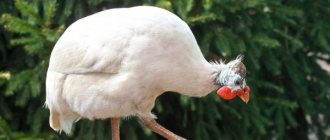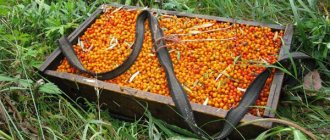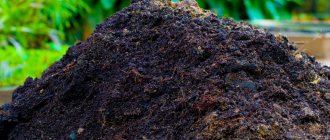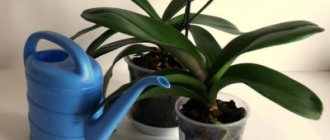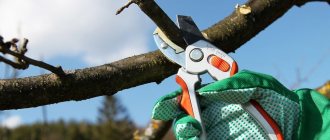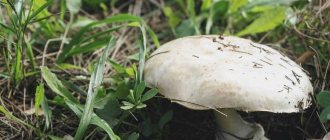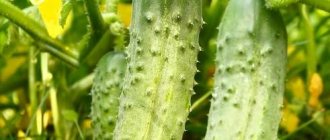How to distinguish male sea buckthorn from female
Sea buckthorn is a tree that has taken one of the places of honor in personal plots. This happened due to the valuable properties of sea buckthorn berries, its decorative and practical value. Its berries are used to make wines and tinctures, juices and compotes. In the medical field, sea buckthorn is used to prepare sea buckthorn oil, which has an anti-inflammatory and antiseptic effect. Creams, ointments and lotions based on sea buckthorn have the same properties.
Sea buckthorn has a positive effect on the soil - it fixes the sand in its upper layers. Therefore, plantings of this plant can often be seen on slopes and ravines. Sea buckthorn is planted as an ornamental plant (as a hedge). In winter, sea buckthorn berries are food for birds. The leaves of this tree are used as raw material for tanning.
Features of female sea buckthorn trees
Females are more recognizable and important for the gardener; they can be identified by their characteristic features:
- The presence of berries
is the simplest and most obvious way to identify a female. However, you will have to wait a few seasons to use it. - Before the tree begins to bear fruit, female seedlings can be distinguished by their flowers: they are smaller and not as numerous as on the male tree.
- The leaves of females are more rounded and cup-shaped.
- The female sea buckthorn also has scaly buds, but not so large, there are fewer scales on them and they do not fit so tightly to each other. The buds also have a special forked shape, which gardeners call a “goat’s hoof.”
Sea buckthorn is a fairly easy tree to care for. It does not require frequent watering, cutting branches, etc. However, there are certain tricks in planting and caring for it:
If you know that a male sea buckthorn grows on a neighboring plot, then you can plant only female ones on yours. They will still begin to bear fruit, having taken pollen from a neighbor's tree.
However, it is important that the distance between the areas is not too large, otherwise pollination (which occurs with the help of the wind) will not occur. When examining the buds of a plant to determine its sex, remember that they acquire their final form at least 2.5-3 years after planting
Before this, sea buckthorn also forms buds, but only vegetative ones (those from which foliage and new shoots are formed); the gender of the tree can only be recognized by the flower buds. The best varieties of female sea buckthorn for planting are Podruga, Podmoskovnaya, Etna, Zolotistaya, etc. Sea buckthorn can be grown from seeds, but this method is far from the best
You will not know in advance whether the plants you got are male or female, this can complicate the process of harvesting. Propagating sea buckthorn seedlings is a more preferable option. At the same time, remember that the shoots will be of the same sex as the tree that gave them (for example, from a female individual we will also get female seedlings). If there is not enough space on your site to plant a new tree, and there are no males nearby, you can purchase a kind of sexual hybrid from the nursery: a female seedling onto which one male branch is grafted. This will save space and guarantee a harvest at the end of the season.
Sea buckthorn fruits are very valuable compared to other berry crops. They are rich in vitamins, carotene, microelements, sugars and organic acids necessary for the normal functioning of the body. Many gardeners want to have such a shrub in their garden. Unfortunately, it often happens that, having purchased a plant and given it the necessary care, the gardener does not receive fruit. The fact is that plants are divided into male and female. How to distinguish female from male sea buckthorn? Is it necessary to have both shrubs on the plot to guarantee a harvest?
Sea buckthorn care
It is better to add nutrients in the fall - superphosphate and potassium salt are suitable for this. They can also be added to the pit for planting sea buckthorn (unlike nitrogen fertilizers, which can cause severe burns to the roots of seedlings).
Sea buckthorn is an easy-to-care plant with above-average resistance to diseases and pests. With proper planting of a tree and further care for it, high yields are guaranteed every year for 30-40 years.
- Spring pruning - done in March to remove diseased, old and frozen branches;
- It is recommended to remove weeds growing around the tree;
- In the second half of May, it is better to treat sea buckthorn against pests - a solution of karbofos (25 g per 10 liters of water) is suitable for this;
- It is better to water twice a year, followed by loosening the soil in the tree trunk circles. In hot weather, increase the volume of water applied and irrigate by sprinkling;
- Organic fertilizers - bird droppings, manure, and complex mineral supplements - are suitable as fertilizing for sea buckthorn.
The varieties Orange, Chuyskaya, Moscow Beauty, Gift to the Garden, and Yantarnaya are suitable for our climatic region. Different sexes and proper planting of sea buckthorn are a guarantee of a good harvest.
How to plant a crop correctly
The agricultural technology features of garden sea buckthorn are quite simple. It should be remembered that this light-loving crop grows well in areas not shaded by buildings or other tall plants. Planting in most regions must be done in the spring according to the following rules:
- the site for growing sea buckthorn should have light, fertile, sufficiently moist soils;
- Berry plants should not be planted in areas with stagnant water and high groundwater;
- too acidic soils require mandatory pre-planting liming with slaked lime at the rate of 0.5 kg per square meter;
- Work on deep digging of soil and liming is best carried out in the autumn;
- heavy loamy soils need to improve their air permeability, so it is necessary to add coarse river sand, humus or peat;
- You can plant plants in a clump, placing a male plant in the center and female bushes around it;
- Row planting is allowed with a standard distance between plants of approximately 2.0–2.5 m.
When digging in autumn, it is advisable to enrich the soil with basic nutrients. For this purpose, for each square meter you need to add 0.25 kg of superphosphate and 40–45 g of potassium salt. If necessary, potash and phosphate fertilizers are applied directly to the planting hole. Nitrogen-containing fertilizers and lime cannot be poured into the planting hole, due to the risk of burning the root system.
The agricultural technology features of garden sea buckthorn are quite simple. It should be remembered that this light-loving crop grows well in areas not shaded by buildings or other tall plants. Planting in most regions must be done in the spring according to the following rules:
- the site for growing sea buckthorn should have light, fertile, sufficiently moist soils;
- Berry plants should not be planted in areas with stagnant water and high groundwater;
- too acidic soils require mandatory pre-planting liming with slaked lime at the rate of 0.5 kg per square meter;
- Work on deep digging of soil and liming is best carried out in the autumn;
- heavy loamy soils need to improve their air permeability, so it is necessary to add coarse river sand, humus or peat;
- You can plant plants in a clump, placing a male plant in the center and female bushes around it;
- Row planting is allowed with a standard distance between plants of approximately 2.0–2.5 m.
When digging in autumn, it is advisable to enrich the soil with basic nutrients. For this purpose, for each square meter you need to add 0.25 kg of superphosphate and 40–45 g of potassium salt. If necessary, potash and phosphate fertilizers are applied directly to the planting hole. Nitrogen-containing fertilizers and lime cannot be poured into the planting hole, due to the risk of burning the root system.
Planting sea buckthorn
It is better to purchase seedlings in special nurseries - planting and care specialists will accurately select a plant of the desired sex.
If the choice is made correctly, and you have both male and female seedlings, you need to plant the trees correctly. This is a necessary condition for pollination, and therefore for high yields.
In addition to the fact that the female individual will be pollinated by the male, this process will be facilitated by air flows, wind, and pollinating insects. Despite the fact that a single male specimen in one site is capable of pollinating up to 5 female specimens at a distance of 10 meters or more from it, it is recommended to plant plants close to each other. The closer the trees are planted, the better the pollination and productivity.
The place where sea buckthorn will feel comfortable and grow well should be filled with light - it is better to exclude the proximity of sea buckthorn to tall trees with a wide crown - they will not let the sun's rays through to the sea buckthorn.
The soil for planting must have neutral acidity - if it is high, treatment with slaked lime is necessary in a ratio of 0.5 kg per 1 sq. m. Its fertility, friability and nutritional value are taken into account. When planting sea buckthorn, it is recommended to avoid areas where groundwater is located too close to the soil surface or the soil is swampy - in such conditions the bush may die. On loamy soils, air permeability is difficult - adding peat, humus, and river sand will saturate it with oxygen.
Which one bears fruit?
Having learned all the details of the differences, a completely logical question arises - which of these trees will bear those very useful fruits? As a rule, sea buckthorn berries appear on the female tree. But if there is no male tree nearby, then, accordingly, such a plant will not bear fruit.
In windy weather, the male tree will pollinate the female tree, after which orange berries will appear. It is worth noting that for 6–7 female trees, one male tree will be quite sufficient. Remember that it should not be planted too far away, the distance should be no more than fifty meters.
Adviсe
If the question arises: is sea buckthorn a boy or a girl, how to recognize and distinguish shrubs, you need to know the answer to it before planting the plant in the ground. The plant has 2 types of buds: growth buds, which are also called vegetative, and fruit buds (fruit-growing, generative-vegetative). If you look carefully, the bud related to the growth will be the same in female and male shrubs. Differences occur in the fruit and growth buds - male buds are noticeably larger and have several dark scales.
Important to remember! In young plants, regardless of gender, exclusively growth buds are formed in the first season, so it is very difficult to determine whether a plant is male or female during this period. It is recommended to purchase sea buckthorn for your garden that is already 3 or 4 years old, since all types of buds are already fully formed.
In young bushes, a leaf will help determine the sex. The peculiarity of the male sea buckthorn plant is that the leaves are larger in size.
It is recommended to purchase sea buckthorn for your garden that is already 3 or 4 years old, since all types of buds are already fully formed. In young bushes, a leaf will help determine the sex. The peculiarity that the male individual of the sea buckthorn plant has is that the leaves are larger in size.
In order not to make a mistake and purchase the necessary plant (“boy” or “girl”), it is best to visit a nursery. Here, sea buckthorn of any variety is propagated vegetatively, and experts monitor the sex of the plant. Also in the nursery there are seedlings with grafting (universal), so the variety of the purchased shrub will be guaranteed to bear fruit. The advantage of purchasing from a nursery is also that you can choose the desired variety, which will take into account the taste, color of the berries and even their size.
Important! All trees should grow as close to each other as possible, preferably no further than 50 m. If the male plant is located far away (across several areas), then the sea buckthorn will bear fruit, but most likely very weakly
When it is possible to recognize the sex of the sea buckthorn, you need to select and prepare a plot of land for it. The soil should be well dug, watered and fertilized (without adding nitrogen). In order to guarantee abundant fruiting, you need to choose 1 male plant for every 5 female bushes.
You can plant a plant yourself by taking root offspring, but you need to know exactly the gender of the mother plant. It will be possible to check whether a mistake has been made only 2-3 seasons after planting, if the plant is young, which is why it is recommended to choose an adult plant if there is not enough experience in gardening.
Experts should help ensure that a person understands how to determine the sex of a selected sea buckthorn plant, since not all gardeners know the intricacies and nuances of this process. Also, in the process of determining the sex of sea buckthorn, the shoots will help - in males they are powerful, well-formed, in female shrubs they are more compact.
It is important to distinguish between shrubs in order to create beautiful, from the point of view of landscape design, plantings that can produce a good harvest. It is guaranteed that they can be distinguished in adult plants.
During the maintenance process, sea buckthorn will require watering and weeding, as the grass takes away the necessary nutritional components. If there are not enough of them, then you will also need fertilizing in spring and autumn.
Thus, the spreading shrub with orange berries, recognizable by many, requires increased attention. Sea buckthorn and the question of how to distinguish a male plant from a female plant are the main points that concern a novice gardener.
We planted several sea buckthorn trees in the garden, but we can’t figure out how to separate male and female sea buckthorn? What if both trees are the same? Tatiana, Tula.
Types of trimmings:
- formative - allows you to form a compact crown of the correct shape, setting it in the early period of development. It is necessary to remove excess shoots damaged by pests and diseases;
- rejuvenating - helps restore fruiting, increases productivity. In spring, three-year-old branches and young shoots are left, and older ones are cut off;
- regulating – helps maintain the created form, its lightening and thinning;
- restorative - restores damaged or neglected crown; sanitary – carried out for preventive purposes against pests and diseases.
The shrub winters well, especially the zoned varieties. Before wintering, the soil can be mulched. In the first year of life, bushes planted in autumn are wrapped.
How to distinguish male and female sea buckthorn trees - video
Many gardeners dream of growing a bush or two of sea buckthorn on their plot. This passion for this plant is not accidental. Everyone has long known the miraculous medicinal properties and great health benefits of the unique combination of vitamins and microelements contained in golden-orange berries.
Unfortunately, not all gardeners manage to get the desired vitamin harvest. This comes from ignorance of one feature of the bush. Sea buckthorn is a dioecious plant, which means that on one plant exclusively male flowers bloom, while the other bears only female flowers in the spring. Female flowers subsequently form berries, but this can only happen if they receive pollen from male flowers. Consequently, in order to obtain a harvest nearby, it is necessary to plant simultaneously a “male” sea buckthorn and a “female” sea buckthorn. Planting female plants alone will not give the desired result, that is, berries. To pollinate several (usually 6–8) female bushes, one male specimen is sufficient.
Diseases and pests: treatment methods
Sea buckthorn suffers from diseases and pests. Shrub pests:
- green sea buckthorn aphid - located on the leaves, sucks the juice from them, causing significant damage. It is necessary to spray with tobacco infusion (200 g per 5 liters of boiling water, infuse for a day, then add laundry soap), dandelion (200 g per 5 liters of boiling water), onion peel (100 g per 5 liters of boiling water, infuse for 5 days);
- sea buckthorn fly is a very dangerous pest that can destroy the entire crop. If larvae are detected in the berries, you need to treat the bush with a solution of karbofos (30 g per 10 liters of water).
Main diseases:
- scab - the berries become hard and acquire an unpleasant taste;
- fruit endomycosis - berries lose their color and decompose.
Damaged berries and branches are cut off and burned, and in the spring the bush is treated with a 3% nitrafen solution.
How to distinguish male from female sea buckthorn?
We planted several sea buckthorn trees in the garden, but we can’t figure out how to separate male and female sea buckthorn? What if both trees are the same? Tatiana, Tula. Since sea buckthorn is a dioecious shrub, to obtain berries, it is necessary that both male and female plants grow in the garden. Therefore, the question arises of how to distinguish them from each other. Take advantage of expert advice and tips from experienced gardeners to learn to distinguish between male and female sea buckthorn bushes.
Features of sea buckthorn
The concept of dioecious plant means that some sea buckthorn bushes are female, their flowers have only a pistil, while others are male, their flowers have only stamens. To produce berries, pollen from male bushes must pollinate flowers from female ones. Pollination of female bushes occurs with the help of wind. The flowering period of male bushes lasts from 6 to 12 days. Berries, naturally, are formed only on female bushes.
Male and female bushes are very similar to each other, the only way to distinguish them is to consider the vegetative-generative, that is, flower buds of both plants. It is possible to determine the gender of sea buckthorn bushes only on adult plants in the fall, when the process of bud formation has completed, or in early spring, when their swelling begins. In young shrubs it is impossible to distinguish gender, since they only have vegetative buds, that is, those from which leaves later grow.
How to find differences?
The following signs will help you distinguish between bushes:
1. At first, young seedlings of male bushes are larger in size than female ones, and over time, female ones catch up and outgrow, becoming larger than male ones.
2. The generative buds of female seedlings are small and covered with two large scales, the buds of male seedlings are much larger - almost 3 times, covered with 5-10 fleshy scales of various sizes, visually resembling small cones.
3. In female bushes, the flowers are yellow and collected in bunches of 3-11 pieces in one bosom. In male bushes, the flowers have a greenish-silver tint.
4. In late spring and summer, when the leaves have blossomed on the bushes, sea buckthorn bushes can be distinguished by carefully examining the leaves. Female sea buckthorn bushes have greener foliage, while male bushes have grayer leaves.
5. There is more bluish bloom on the foliage of male bushes than on the foliage of female bushes.
6. The leaves of male plants are smooth, with the central vein turned outward; when cross-sectioned, they look like birds.
7. The leaves of female plants have a concave shape, similar to a trough; when cut across, the leaf looks like a bowl.
Knowledge of the biological characteristics of male and female bushes makes it easy to distinguish them. Use the tips presented to distinguish male sea buckthorn bushes from female ones.
What is the difference?
By its nature, sea buckthorn is considered a dioecious plant, which means that there is a female tree and a male tree. It is not so difficult to distinguish male from female sea buckthorn. True, sex can only be determined when the buds appear.
Now we will tell you everything in more detail.
“A boy from a girl” can be distinguished by the buds and flowers of the tree; this is their main difference. As a rule, the female tree has unisexual pistillate flowers, and the male tree has staminate flowers. It is easy to recognize staminate buds, as they are several times larger.
Pay attention to the scales that cover the kidney. A male tree has at least 5–6 of them and they all differ in size. And the women's have only two or three, but they are very large. Purely visually, if you remember all these features, it’s easy to find out which tree is in front of you.
They also differ in leaves. The flatter leaves belong to the boy tree and they are covered with a thick, almost gray coating. Concave leaves are a sign of a “girl”; there is practically no plaque on them, they are greener.
How to distinguish female from male sea buckthorn: description, photo
Sea buckthorn is a bushy shrub with bright orange, yellow or red fruits, depending on the plant variety. They have a rich sweet and sour taste and a subtle pleasant aroma. Sea buckthorn blooms in early spring. Inconspicuous small flowers of white or cream color appear, collected in brushes. You can see how sea buckthorn blooms in the photo.
The plant begins to bear fruit at the end of August. Oblong berries of bright colors appear on a small tree. In order to harvest as much as possible, male and female plants are usually planted not far from each other. It is better to plant these shrubs in bright places in sandy soil.
Sea buckthorn is most widespread in Siberia, the European part of Russia, Moldova, the Caucasus, and Ukraine.
Many gardeners want to have such a shrub in their garden. Unfortunately, it often happens that, having purchased a plant and given it the necessary care, the gardener does not receive fruit. The fact is that plants are divided into male and female.
How to distinguish female from male sea buckthorn? Is it necessary to have both shrubs on the plot to guarantee a harvest?
How to tell the difference?
How to distinguish female from male sea buckthorn? This can be determined by the following signs:
- Shape of bush buds. On female plants they are located singly with a short distance from each other; on a male tree they are collected in inflorescences of several pieces, which look like cones. Unfortunately, this difference is not noticeable on plants under 3-4 years of age.
- Female flowers have a yellow tint and are collected in inflorescences, while male flowers are greenish-silver.
- In late spring, when the leaves have already grown to their final size, their shade is greener on female shrubs. Male plants have a bluish coating on the foliage.
- The leaf shape of male trees is flat, while that of female trees is bowl-shaped.
The shrub is dioecious - this means that for the fruit to appear, the female plant must be pollinated by the male
That is why it is important to know how to distinguish female from male sea buckthorn when buying seedlings
Pollination of plants occurs through the work of insects and wind. One male plant is able to pollinate five female plants at a distance of 10 meters from it. Of course, a female sea buckthorn shrub located at a distance of up to 50 meters from a male one can be pollinated, but to obtain the best result, the plants are planted nearby.
After we have learned how to distinguish a male sea buckthorn tree from a female one, it is worth thinking about the right place for planting
The shrub is quite light-loving, so it is important to place it in an area with sufficient lighting, avoiding close proximity to tall trees with a spreading crown
The soil for planting shrubs must be fertile, nutritious, loose, with a neutral pH. In swampy and waterlogged soils, the tree will not bear fruit, and in addition, there is a high probability of its death.
When watering and fertilizing, one should take into account the fact that the root system is located superficially and has a diameter that is 2 times the height of the crown. The plant responds positively to the application of phosphorus and loosening the soil.
For temperate climates, shrubs with small growth (up to 2 meters), weak thorniness, high yield, and large fruit are ideal. According to these parameters, the most suitable varieties are Orange, Excellent, Chuyskaya, Amber, Moscow Beauty, Podarok Sad.
Before planting sea buckthorn, you need to know how to distinguish female and male bushes so as not to accidentally plant two same-sex bushes, because in this case there will be no harvest.
How to plant sea buckthorn:
- For planting, dig a hole about 50 cm deep and 50 cm wide.
- The soil from the pit is combined with fertilizers - compost, potassium phosphate and superphosphate.
- Part of the nutrient soil is poured into the bottom of the hole.
- The seedling is fixed in a vertical position and covered with the remaining soil. The root neck should be deepened by 5 cm.
- The newly planted plant is watered with a bucket of water, to which 1 glass of dolomite flour was added per 10 liters of liquid.
When planted correctly, the plants should be located at a distance of 2 meters from each other due to the developed root system.
Caring for sea buckthorn consists of regular watering, loosening the soil, fertilizing and removing weeds around the bush. In hot weather, watering should be especially abundant and preferably done by sprinkling. Formative pruning is required periodically.
There are no particular difficulties in growing sea buckthorn; for a bountiful harvest, you only need to correctly select and plant plants of different sexes.
Nuances of cultivation
The shrub is dioecious, which means that for fruit to appear, the female plant must be pollinated by a male plant. That is why it is important to know how to distinguish female from male sea buckthorn when purchasing seedlings.
Pollination of plants occurs through the work of insects and wind. One male plant is able to pollinate five female plants at a distance of 10 meters from it. Of course, a female sea buckthorn shrub located at a distance of up to 50 meters from a male one can be pollinated, but to obtain the best result, the plants are planted nearby.
Adviсe
If the question arises: is sea buckthorn a boy or a girl, how to recognize and distinguish shrubs, you need to know the answer to it before planting the plant in the ground. The plant has 2 types of buds: growth buds, which are also called vegetative, and fruit buds (fruit-growing, generative-vegetative). If you look carefully, the bud related to the growth will be the same in female and male shrubs. Differences occur in the fruit and growth buds - male buds are noticeably larger and have several dark scales.
Important to remember! In young plants, regardless of gender, exclusively growth buds are formed in the first season, so it is very difficult to determine whether a plant is male or female during this period. It is recommended to purchase sea buckthorn for your garden that is already 3 or 4 years old, since all types of buds are already fully formed.
In young bushes, a leaf will help determine the sex. The peculiarity of the male sea buckthorn plant is that the leaves are larger in size.
It is recommended to purchase sea buckthorn for your garden that is already 3 or 4 years old, since all types of buds are already fully formed. In young bushes, a leaf will help determine the sex. The peculiarity that the male individual of the sea buckthorn plant has is that the leaves are larger in size.
In order not to make a mistake and purchase the necessary plant (“boy” or “girl”), it is best to visit a nursery. Here, sea buckthorn of any variety is propagated vegetatively, and experts monitor the sex of the plant. Also in the nursery there are seedlings with grafting (universal), so the variety of the purchased shrub will be guaranteed to bear fruit. The advantage of purchasing from a nursery is also that you can choose the desired variety, which will take into account the taste, color of the berries and even their size.
Important! All trees should grow as close to each other as possible, preferably no further than 50 m. If the male plant is located far away (across several areas), then the sea buckthorn will bear fruit, but most likely very weakly
When it is possible to recognize the sex of the sea buckthorn, you need to select and prepare a plot of land for it. The soil should be well dug, watered and fertilized (without adding nitrogen). In order to guarantee abundant fruiting, you need to choose 1 male plant for every 5 female bushes.
You can plant a plant yourself by taking root offspring, but you need to know exactly the gender of the mother plant. It will be possible to check whether a mistake has been made only 2-3 seasons after planting, if the plant is young, which is why it is recommended to choose an adult plant if there is not enough experience in gardening.
Sea buckthorn oil
Experts should help ensure that a person understands how to determine the sex of a selected sea buckthorn plant, since not all gardeners know the intricacies and nuances of this process. Also, in the process of determining the sex of sea buckthorn, the shoots will help - in males they are powerful, well-formed, in female shrubs they are more compact.
It is important to distinguish between shrubs in order to create beautiful, from the point of view of landscape design, plantings that can produce a good harvest. It is guaranteed that they can be distinguished in adult plants.
During the maintenance process, sea buckthorn will require watering and weeding, as the grass takes away the necessary nutritional components. If there are not enough of them, then you will also need fertilizing in spring and autumn.
Thus, the spreading shrub with orange berries, recognizable by many, requires increased attention. Sea buckthorn and the question of how to distinguish a male plant from a female plant are the main points that concern a novice gardener.
Planting and caring for plants
Before planting sea buckthorn, you need to know how to distinguish female and male bushes so as not to accidentally plant two same-sex bushes, because in this case there will be no harvest.
How to plant sea buckthorn:
- For planting, dig a hole about 50 cm deep and 50 cm wide.
- The soil from the pit is combined with fertilizers - compost, potassium phosphate and superphosphate.
- Part of the nutrient soil is poured into the bottom of the hole.
- The seedling is fixed in a vertical position and covered with the remaining soil. The root neck should be deepened by 5 cm.
- The newly planted plant is watered with a bucket of water, to which 1 glass of dolomite flour was added per 10 liters of liquid.
Plant varieties
There are many varieties of sea buckthorn. The most common ones should be considered in more detail. Description of each variety:
- Sea buckthorn. It is a low thorny shrub up to 3 m. A dioecious plant that blooms in April or May. Grows along ponds and in home gardens. The fruits are bright orange in color and have a bitter taste.
- Daurian sea buckthorn. A distinctive feature of this variety is its ability to self-pollinate. It has silver leaves. During the flowering period it has a pleasant aroma. The fruits are light red in color and juicy with a pleasant sweetish taste.
- Red sea buckthorn. The professional name of this variety among gardeners is shepherdia. Suitable for planting in garden plots not only as a useful plant, but also as a decoration. After all, during the flowering period it is covered with beautiful white flowers, and the red fruits will be an excellent decoration for any garden.
- Sea buckthorn herringbone. A very rare plant variety. It is easy to decorate garden plots with a Christmas tree, as it grows in the shape of a cone and does not require tying up. As a result of this feature, the name came about. It bears fruit quite late - by the end of September. They have a slight greenish tint.
- Chuya sea buckthorn. It is a frost-resistant variety. The orange fruits have a pleasant sweet and sour taste. The harvest can be harvested by the end of summer.
- Favorite sea buckthorn. The harvest comes quite a long time after planting. The fruits are large in size and bright yellow in color. It is characterized by strong cold resistance.
Varietal features
It would seem that there is only one type of sea buckthorn. This is the same tree that we are accustomed to seeing in gardens since childhood. But in reality there are many different varieties. We'll tell you about the most popular ones right now.
“Favorite”, “Girlfriend”, “Amber”, “Excellent” - all these are popular varieties of sea buckthorn. Their main difference is that these varieties grow practically without thorns, which makes harvesting much easier. For example, the “Excellent” variety is distinguished not only by the complete absence of thorns, but also by the fact that the berries are easy to pick and are not damaged at all during picking. The remaining varieties grow with sparse thorns.
All the berries turn out juicy, aromatic, and medium in size. They are great for both winter preparations in the form of jam and for fresh consumption.
Among the dessert varieties, the following can be noted: “Ruet”, “Tenga” and “Elizaveta”. The first of these varieties is distinguished by the fact that it produces a bountiful early harvest. The thorns of this variety are short, the berries are small, but very tasty. “Elizabeth” tolerates winter well and is considered a later variety. The bush of this variety is compact, and the berries have a special, pronounced taste. “Tenga” is the sweetest variety among the above, and once you try it you can’t stop.
All the varieties listed above are varieties of female trees. As for the male, namely pollinating varieties, it is worth about and “Alei”. Both options withstand frost well, produce a lot of pollen and take up little space in the garden, so they do not block other trees and plants.
How to determine the sex of sea buckthorn
Sea buckthorn can be found in many garden plots. Undeservedly forgotten several decades ago, this culture is being revived again and is popular due to the invaluable benefits that it can bring to the human body. However, inexperienced gardeners are often faced with a situation where a well-groomed bush does not bear fruit, not knowing that the reason may be quite banal and lie in the gender of the plant.
What is a dioecious plant
The concept of dioecious plant means that it has two sexes - male and female. The male sex, whose buds are equipped exclusively with stamens, is intended to pollinate the female sex with pistils in flowers, i.e., the generative organs, relatively speaking, are located in “two houses” - male and female.
This also applies to sea buckthorn. The process of such cross-pollination occurs with the help of the wind. Pollen flies from the male plant to the female plant, fertilizing it. Moreover, pollination occurs even if the plants are located at a fairly large distance from each other - up to 50 m, however, a greater yield of berries will be in the case when the sea buckthorn bushes are located as close to each other as possible.
In a small area, it is enough to plant at least one male shrub - it will be enough to pollinate 5 female ones. Flowering of sea buckthorn bushes occurs in April – May and lasts about 10–12 days. First of all, the male flowers open, which contain a colossal amount of pollen, and a day later the female flowers bloom. During flowering, in principle, there is nothing remarkable - the trees are covered with small petalless flowers collected in spikelets. Beautiful lush buds and a wonderful aroma are completely absent.
Which sea buckthorn bears fruit - male or female?
Berries appear only on female bushes. Without a male tree, the process of pollination and fruit formation is impossible, unless we are talking about specially bred polyecious specimens. The fruits are formed in August or September (depending on the variety). Beginning gardeners should take into account that the crop begins to bear fruit only 3–4 years after planting.
Does sea buckthorn change gender?
In nature, there are species of dioecious plants that are capable of becoming monoecious in certain stressful situations (for example, hemp), that is, having flowers of both sexes. As for sea buckthorn, by itself it does not have such an ability and cannot independently change gender. But those who have only female bushes growing on their plot should not be upset, as male branches can be grafted onto them.
Moreover, every year male trees grow greatly and produce a lot of shoots that litter the area. This procedure is often carried out in nurseries that grow universal seedlings, which then do not need pollinating neighbors.
How to quickly pick berries
Until recently, fruit collection was one of the main problems of summer residents, but it was solved after the development of new varieties. For example, the varieties Dar Katuni and Chuyskaya are characterized by enlarged stalks, which greatly facilitates their collection
You must remember that you need to pick berries very carefully so as not to damage the fruits, leaves and branches
You can make a device called a “cobra”. They take a thin steel wire (you can use an invisible hairpin), bend it in a loop at one end (in the shape of a baby’s pacifier), and make a handle at the other end. Sea buckthorn berries are passed through a loop and pulled, they themselves fall into a collection container, and the tedious task becomes more interesting and exciting.
This unique plant is a valuable food product and a healing agent that can be used to treat everything from skin burns to heart disease. Nature has created this gift for us, which brings joy with its taste and heals our body.
Description
In the 18th century This shrub was described by botanists studying the territory of Eastern Siberia. But many believe that it appeared on Russian territory much earlier. In ancient times, its fruits were used for medicinal purposes in Tibet and Mongolia, and ancient Greek and Chinese ancient documentary sources indicate that these countries are the birthplace of the shrub.
Based on the size and weight of berries, the following groups of varieties are distinguished:
- “small”, berry weight 0.4–0.5 g: Mikhalevskaya sweet, Chudesnitsa, Fragrant, Bogatyrskaya, Vladimirka, etc.;
- “medium”, berry weight 0.6–0.7 g: Vitaminnaya, Nugget, “News of Altai”, etc. This group also includes the Otradnaya variety. It is of medium maturity, vigorous, pyramidal, and characterized by resistance to frost, diseases and pests. The shoots are dark green, straight and thick, with thorns. The berries are round, pear-shaped, red-orange in color. The skin has medium thickness. The length of the stalk is 6.5 mm. The berries are slightly sour, yield 155 c/ha;
- “large”, their berries weigh more than 0.8 g: Golden, Excellent, Giant, etc.
Everyone knows the healing properties of this plant; its berries contain many vitamins, oils and acids, as well as other useful substances. Since ancient times, healers have treated burns and wounds of warriors with a miraculous ointment made from the fruits of this shrub. Sea buckthorn tinctures had a general strengthening and analgesic effect, helped the body cope with colds and skin diseases, and sea buckthorn oil was used in the treatment of rheumatism. Nowadays, sea buckthorn extract is included in many medical preparations.
It is believed that this shrub is endowed with strong protection from otherworldly energy and helps dissipate the destructive influence of geopathogenic zones.
It is best to place it at the entrance to the yard or on the north side. If you are visited by a person with negative energy, throw some sea buckthorn berries after him. This way you will protect your family and yourself from destructive energy.
According to one of the ancient Greek legends, the leaves and shoots of this shrub were fed to horses to improve their condition, strength and appearance. They were also Pegasus's favorite food.
